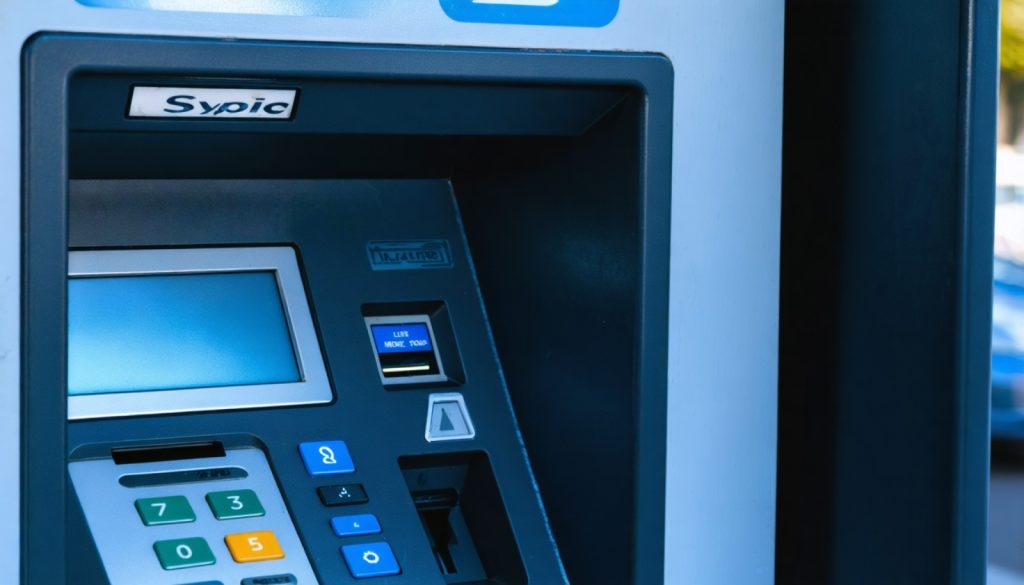
- Australia’s crypto ATM landscape is under scrutiny by AUSTRAC, highlighting compliance issues.
- The rapid increase in crypto ATMs, from 23 in 2019 to over 1,600, signals digital finance growth but also increased risk exposure.
- AUSTRAC’s investigation reveals transaction patterns suggesting potential scams and fraud.
- Many operators are not meeting Anti-Money Laundering and Counter-Terrorism Financing (AML/CTF) Act standards.
- The U.K.’s stringent crypto ATM regulations serve as a parallel model for Australia.
- The balance between innovation and regulation is critical, emphasizing security without stifling progress.
- Australia’s approach underscores the necessity of responsibility alongside technological advancement.
Australia’s bustling landscape of cryptocurrency ATMs—an emerging frontier in financial technology—is now under the sharp scrutiny of AUSTRAC, the nation’s vigilant financial watchdog. As crypto transactions gain momentum, the agency sounds an alarm, revealing cracks in the compliance armor of some providers. This unexpected revelation commands attention: are convenience and innovation outpacing security?
The rapid surge from a mere 23 crypto ATMs in 2019 to over 1,600 signals Australia’s firm embrace of digital finance. Yet, with expansion comes increased exposure to risks. AUSTRAC’s dedicated task force, established last December, unearths patterns as unsettling as they are enlightening. It points to a tapestry of transactions that raise red flags, hinting at potential scams and fraudulent activities weaving through the network.
In the bustling corridors of Australia’s digital economy, these ATMs operate as gateways to the decentralized world. However, AUSTRAC identifies a crucial shortfall: some operators are not fully aligned with the rigorous standards of the Anti-Money Laundering and Counter-Terrorism Financing (AML/CTF) Act of 2006. The mandate calls for registering with regulators, conducting meticulous “Know Your Customer” (KYC) procedures, and monitoring transactions—essential checks to safeguard not just finances but public trust.
Drawing parallels from across waters, Australia watches the U.K.’s regulatory landscape. There, crypto ATMs operate under stringent licenses, with recent enforcement actions leading to significant legal repercussions. This echoes a global collective movement toward tightening loopholes that could harbor illicit activities.
The vibrant rush of cryptocurrency should not overshadow the imperative of security. Australia’s proactive stance sends a resounding message to crypto ATM operators: evolve or risk exclusion from the legitimate financial orbit. For users, it’s a clarion call to remain informed and discerning in navigating this economic frontier.
Ultimately, the dynamic interplay between innovation and regulation is a balancing act. As both the allure and complexity of cryptocurrencies deepen, Australia’s current measures are a pivotal step. In securing a future where technology enhances rather than undermines trust, vigilance and compliance must rise in tandem with the number of crypto ATMs dotting the nation. The takeaway is crystal clear: progress in financial technology demands responsibility as its steadfast companion.
Are Cryptocurrency ATMs in Australia Secure? Navigating Risks and Innovations in Digital Finance
Introduction
Australia’s cryptocurrency ATM landscape is experiencing a remarkable transformation, evolving from a mere 23 machines in 2019 to over 1,600 today. This rapid growth signifies Australia’s strong embrace of digital finance but also highlights the challenges of ensuring security and regulatory compliance. Let’s delve deeper into the implications of this growth, explore the regulatory landscape, and provide actionable tips for users and operators.
The Growth and Risks of Crypto ATMs
The surge in cryptocurrency ATMs has made digital currencies more accessible, allowing users to purchase cryptocurrencies conveniently. However, this convenience comes with risks. According to AUSTRAC, the increase in ATMs has been accompanied by a rise in potential scams and fraudulent activities, emphasizing the necessity of robust compliance measures.
Regulatory Landscape and Comparison
Australia’s regulatory framework, governed by the Anti-Money Laundering and Counter-Terrorism Financing (AML/CTF) Act of 2006, requires crypto ATM operators to register with regulators, conduct thorough “Know Your Customer” (KYC) checks, and monitor transactions rigorously. However, AUSTRAC has identified non-compliance issues among some operators, indicating that the regulatory oversight may need enhancements to keep pace with the industry’s rapid growth.
Globally, countries like the U.K. have implemented stringent licensing and enforcement actions to regulate crypto ATMs. Australia can draw lessons from these models to improve its compliance standards and prevent the facilitation of illicit activities.
Market Forecast and Industry Trends
The cryptocurrency ATM market is expected to continue its upward trajectory, driven by increasing adoption of digital currencies and technological advancements. According to a report by MarketsandMarkets, the market for crypto ATMs is projected to grow at a CAGR of 54.7% between 2021 and 2026. This growth necessitates an emphasis on regulatory compliance to mitigate associated risks.
How to Ensure Secure Transactions
For users looking to use crypto ATMs, consider the following precautions:
1. Verify Operator Compliance: Before using a crypto ATM, ensure that the operator is registered with AUSTRAC and complies with KYC protocols.
2. Safeguard Personal Information: Be cautious about the information you provide. Only necessary details should be shared, and it’s crucial to avoid storing sensitive information on public networks.
3. Understand Transaction Fees: Cryptocurrency ATM fees can be higher than other transaction methods. Be aware of the costs involved and compare rates.
4. Monitor Transactions: Keep a record of all transactions conducted through crypto ATMs for future reference.
Actionable Recommendations for Operators
1. Enhance Compliance: Regularly update KYC and AML processes to comply with regulatory standards.
2. Increase Transparency: Provide customers with clear, detailed information about transaction fees and security measures.
3. Adopt Advanced Security Technologies: Implement state-of-the-art security technologies to safeguard against fraud and unauthorized activities.
Conclusion
The burgeoning landscape of cryptocurrency ATMs in Australia highlights both opportunities and challenges. As the industry grows, maintaining a balance between innovation and security is vital. Both users and operators must prioritize compliance and transparency to ensure trust and safety in digital finance.
For more insights and updates on the evolving world of digital finance and technology, visit AUSTRAC. Prioritize security and stay informed to navigate the complexities of this dynamic economic frontier effectively.



